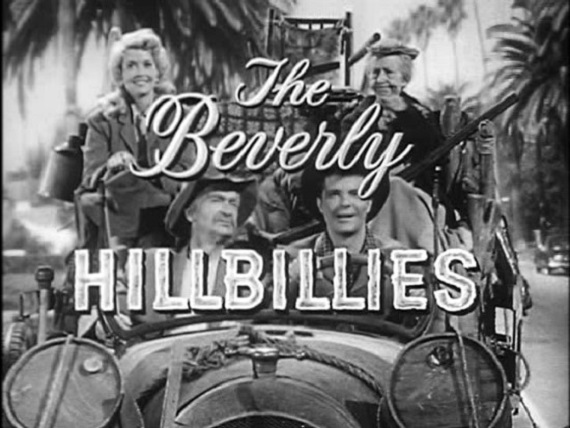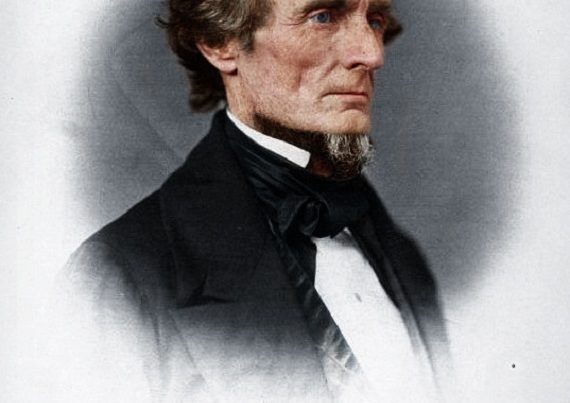Last in a six part series. Part 1. Part 2. Part 3. Part 4. Part 5.
As we all know, in recent times, Southerners, so far as Hollywood is concerned, are subhuman. A Southern accent or a Southern flag is a sure sign of murderous and/or stupid character. Yet it has not always been so, as we tried to show in earlier installments in this series. Besides the favourable portrayal of Southerners and even Confederates in movies before the civilisational crash known affectionately as The Sixties, the South had a largely friendly posture in the earlier and better days of radio and television.
Will Rogers invented radio humour in the 1920s with his colloquies which gently poked fun at Yankees and Republicans and made him one of the most beloved public figure of his times. Of course, with the usual Yankee imperialism, by which all acceptable Southerners are portrayed as honourary Northerners and only shown as Southern when they are treated as evil, Rogers has often been praised as a “Midwestern humourist.” This son of a captain in the Confederate Cherokee regiment. As far as I know, Ohio and Iowa are not noted for humour. Perhaps Rogers contributed to this by presenting himself as a cowboy, disguising the Southernness of what he was about in the same way that Southern music has had to call itself “country and western.” Almost all of Rogers’s many movies are entertaining and soundly Southern.
Older readers are able to remember what a big national presence on radio Southern characters had at a time when evening radio was the primary or only entertainment for many. Among the most popular shows of the 1930s, 1940s, and 1950s were “Amos and Andy,” in which two white men from Georgia introduced likable African Americans to Northerners, and “Lum and Abner,” about two gents from a small town in Arkansas.
A bit later, on television, came “The Dukes of Hazard” (1979—1985), with a car displaying a large “rebel “ banner on its roof, and “Hee Haw” (1969—1971 in primetime, and 20 years in syndication). But the best by far was “The Beverly Hillbillies,” which had a great run from 1962 to 1971 and is still available on reruns. It was a perfect Southern show. The Clampetts, while hayseeds, are kind-hearted and honourable to a fault. Transported to Beverly Hills, their native goodness always triumphs over clearly displayed Yankee greed and pretentiousness. I remember with fondness that Granny was sure that we won The War and once captured an inebriated actor playing U.S. Grant.
Of course, in all these favourable portrayals of Southern characters we have to allow for what I call “the tacky factor.” While good people, these radio and TV Southerners are invariably backward hayseeds without learning, awareness of modern life, or knowledge of fashion. Apparently in contrast to the North, where all the women are cool, poised, and beautiful Meryl Streeps and all the men are suave and dashing Tom Cruses (or Meryl Streeps). Curiously, in the 19th century Southerners were noted for their outstanding gentlemanly and ladylike persons. In fact, the Southerner as hayseed is a dubious stereotype. Anyone who has spent any time around rich Ivy Leaguers knows that any Southern “redneck” has better manners, a more kindly attitude toward strangers, more chivalry, and more personal integrity than the Northeastern “aristocracy.” The tacky factor is usually accompanied by an assumption that Southern women are highly desirable but stupid, apparently a long-running sick fantasy north of Mason and Dixon.
Here I want to present and appreciate some films, mostly fairly recent, that are good Southern stories. In most cases you will not have to send the children out of the room. (* will indicate when you should exercise some PG.) The list is by no means exhaustive and you may well be aware of titles I have missed.
Don’t forget the old reliables mentioned earlier: The General, Gone with the Wind, The Littlest Rebel, Rocky Mountain, Proud Rebel, Escort West, Colonel Effingham’s Raid, Jezebel, The Outlaw Josey Wales, Ride with the Devil , Firetrail, The Last Confederate, Pharaoh’s Army, The Hunley, Gettysburg, Gods and Generals, etc.
Virginia (1941). A quiet, almost forgotten film about a once-prosperous Southern family coping with hard times.
Song of the South (1949). This suppressed Disney classic from the days when Disney was still Disney celebrates the African-American lore in Joel Chandler Harris’s stories told by “Uncle Remus” of the life of Br’er Rabbit and all the other Br’ers. Since Uncle Remus is a wise and good man, the reconstructed Disney conglomerate no longer considers him as a satisfactory role model for black people and the film is hard to find. My copy has Japanese subtitles.
Intruder in the Dust (1949). One of the best presentations of Faulkner’s work in film. An old lady and two boys, one white and one black, take extreme measures to save an ungrateful black man from an unjust murder charge. Much superior, both book and movie, to the greatly over-rated, Yankee-pandering To Kill a Mockingbird, which has a somewhat similar theme. Other good film treatments of Faulkner: Tomorrow (1972), a moving story of love and hardship; Old Man, aka William Faulkner’s Old Man (1997), danger, courage, and honour among humble Southerners during a Mississippi River flood; The Reivers* ( 1969), Faulkner’s hilarious lesson of the consequences of failure to behave like a gentleman as ordered by Grandfather; and Two Soldiers (2003). Avoid like the plague anything with Paul Newman which claims to be based on Faulkner.
I’d Climb the Highest Mountain (1951). A young Methodist minister and his wife in rural Georgia, based on the real life memoirs of Corra Harris that were once very popular.
Goodbye, My Lady (1956). A boy and his dog and the requirements of honour in rural Mississippi. A line from Walter Brennan: “I ain’t never been ‘round no Yankees, thank the Lord.”
The Dollmaker (1984). A fine rendering of Harriette Arnow’s heartbreaking story of a mountain woman condemned to existence in industrial Detroit. Jane Fonda does a good job, believe it or not.
The River (1984). Mel Gibson and Sissy Spacek as a Tennessee couple trying to save their land from nature and that bane of “the New South”—developers.
The Trip to Bountiful (1985). Geraldine Page as a city-bound senior citizen who jumps the fence and returns to her East Texas country roots.
Gone to Texas (1986). A good bio-pic of Sam Houston.
A Burning Passion: The Margaret Mitchell Story (1994). Although somewhat soap-operaish, this film treats the author of Gone with the Wind and her Georgia people respectfully.
Stars Fell on Henrietta (1995). An impoverished Texas family strikes oil with the help of a mysterious wildcatter, Robert Duvall.
Spitfire Grill (1996), a Southern girl in small town Maine.
The Whole Wide World* (1996). A dramatization of the short and unhappy life of Robert E. Howard, the Texas writer who invented “Conan, the Barbarian” and launched a huge new genre of fantasy fiction. Vincent D’Onofrio, born in Brooklyn, shows how a good actor can present perfectly the accent and persona of the time and place. Presumably it was not too much of a reach for Renee Zellweger who was born in Texas.
Rough Riders (1997). This is about the Spanish-American War, but I like the Texan volunteers under Sam Elliott and General Joe Wheeler teaching the Yankees how to fight.
Papa’s Angels (2000). An Arkansas father and five children face the loss of their wife and mother.
The Patriot (2000). While it would be going too far to claim very much historical accuracy for Mel Gibson’s epic of the Revolutionary War in South Carolina, it does give some of the flavor of the time.
A Beautiful Mind (2001). The Aussie Russell Crowe shows how a highly intelligent man can have a genuine Southern accent.
Crazy Like a Fox (2004). An eighth generation Virginian pulls out all the stops to counter “developers.”
New World* (2005). This vivid retelling of the story of Jamestown and of Captain John Smith and Pocahontas has considerable merit.
I could keep this going until Secession Day next December, but I had better show some mercy to the readers. I began this series with the statement that movies deserved serious attention because during the 20th century they were a major influence on how people viewed the world and how they behaved. Without doubt, this is progressively less true. The film industry exhibits every sign of decay. Creativity is dead judging from Holywood’s reliance on comic books and foreign movies for stories. Nihilistic violence is rampant. The compulsively obscene speech of lower-class Northerners has taken over the movies as it has much of society. Romance has given way to onscreen copulation. It is hard to know whether Hollywood leads or merely reflects the ongoing collapse of morals, manners, and intelligence in the United State.
[I mean United State deliberately]






